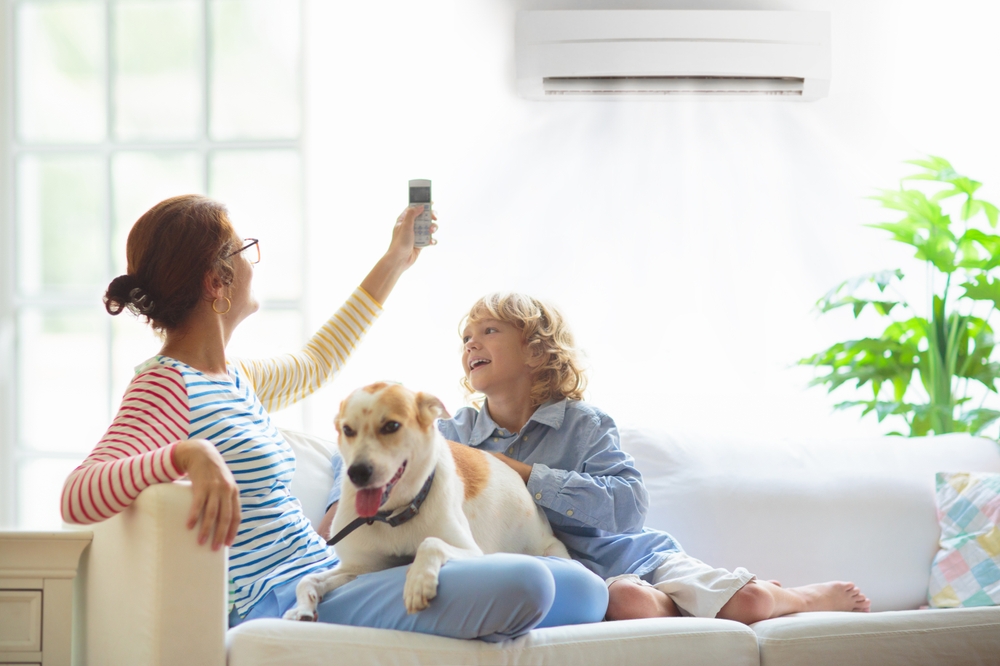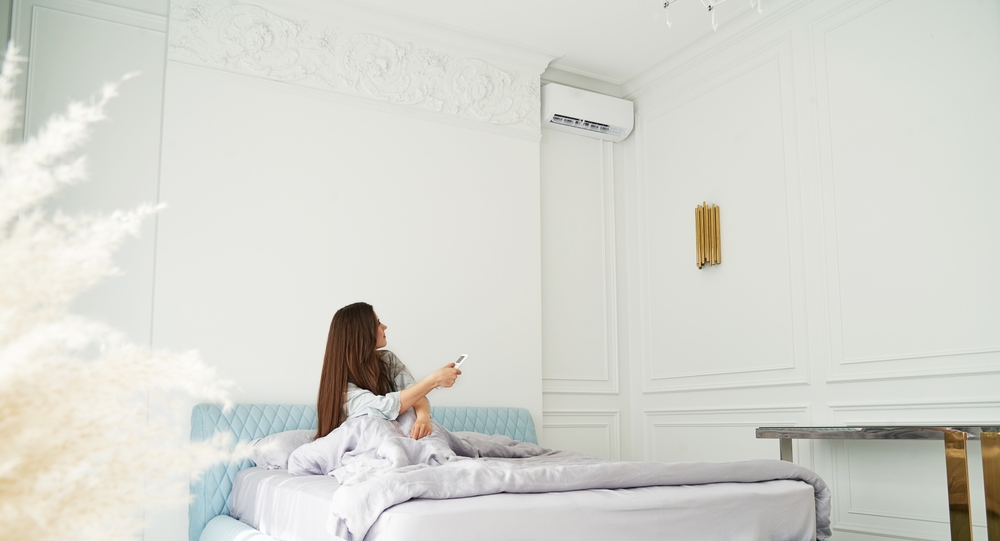
Where should you place the air conditioner?
To get the most benefit and ensure well-cooled spaces, it is important to know where air conditioners should be placed. This way, their performance will be optimised, resulting in better efficiency and lower energy costs. Let’s look at some tips for specific rooms, such as the living room and bedroom.
Where is the best place to put an air conditioner?
A good generator alone is not enough to face the intense summer heat in our homes. A technologically advanced device with strong performance is undoubtedly an effective defence. However, to make it even more useful, it is important to know the ideal positions for placing the air conditioner.
There are two key aspects to consider:
- it is crucial to protect the health of the occupants by keeping them away from a direct stream of cold air, which can cause discomfort and issues such as colds and muscle pain;
- at the same time, the indoor unit of the air conditioner (the split) should not be installed near sources of heat or light, as this would negatively affect its performance.
Given these points, a good rule of thumb is to avoid directing airflow toward the people in the room; instead, it is better to direct it toward passage areas, especially in rooms like the living room and bedroom. In the kitchen, the air should not be focused on the dining table.
Considering that cold air tends to move downward, the air conditioner should be installed in a high position, though not necessarily right up to the ceiling. The ideal height for placing the split unit is around 2.5 metres (8 feet) from the floor, with a distance of 15-20 centimetres (6-8 inches) from the ceiling.
A final key condition is that air must be able to circulate freely without encountering obstacles, allowing it to spread evenly throughout the room.
What location should be avoided in installing an air conditioning unit?
This last consideration helps us understand which areas of the house should be avoided when deciding where to install an air conditioner. It is important to steer clear of corners where cold air would hit an obstruction, such as:
- behind curtains and sofas;
- in front of walls, wardrobes, or other furniture.
This would create the so-called rebound effect, where the circulation of cool air is blocked and deflected in the opposite direction, reducing its cooling effect. The principle is very similar to that of radiators in a heating system, and the consequences are similar in terms of energy costs and actual performance. Turning it on would provide no real benefit, but your energy bill would still increase.
The sun factor should not be underestimated: the air conditioner should be placed away from direct light sources, such as sunlight coming in from outside. Without sun protection elements like blinds, curtains, or shutters, the hot summer sun entering the room would reduce the cooling comfort provided by the device.
Finally, it is a common misconception that placing an air conditioner in the hallway is an ideal solution for cooling multiple rooms at once. This is not the case.
- From an energy standpoint, the best option is to install a split unit in the rooms most frequently used by the occupants, including the bedroom, to ensure even distribution of cool air.
- When the air conditioner is placed in the hallway, the airflow tends to disperse, resulting in warmer and cooler rooms throughout the house.
How should the air conditioner be positioned?
Let’s summarise the recommendations for the correct installation of the indoor unit of the air conditioner:
- The ideal position is at a height of at least 2.5 metres (8 feet) from the floor. This allows the cool air to distribute evenly throughout the room.
- The distance from the ceiling and side walls should be between 15 and 20 centimetres (6 to 8 inches), to facilitate a smooth airflow.
- Whenever possible, the split unit should be installed in a central part of the room, away from obstacles such as curtains, doors, and furniture.
- To protect the health of the occupants, avoid positioning the unit where the airflow would be directed directly onto people, taking into account the room's usage.
- For example, if installing an air conditioner in the bedroom, the airflow should be directed towards a passageway, not the bed. The same principle applies to the living room and dining room/kitchen areas.
- It is not recommended to place the air conditioner near sources of heat or windows exposed to direct sunlight, as this would compromise its performance.
Anyone who decides to proceed with the installation of the unit can rely on the expertise of a qualified technician to make the proper assessments and get the most benefit from the investment.
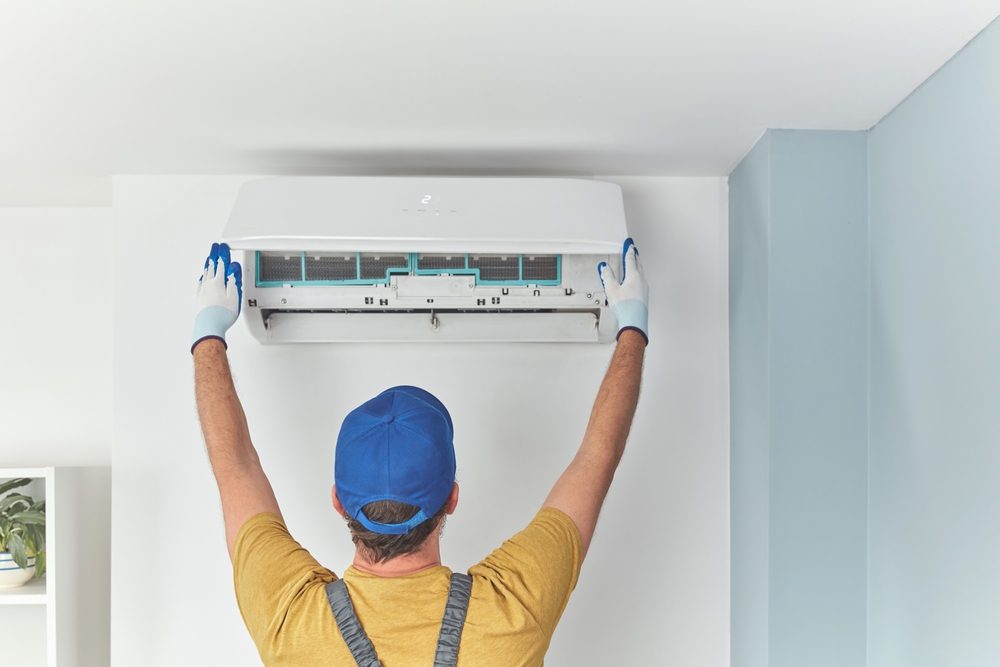
Where should the AC external unit be placed?
The air conditioner consists of two units: the indoor unit (split) and the outdoor unit, which is the generator's motor. Similar to the split, a series of considerations must be made to determine the ideal placement for the outdoor unit.
- Outdoor space. The external unit needs a good airflow to dissipate the heat collected from inside. Narrow balconies or enclosed niches are not good choices, as they can restrict airflow.
- Stability. The external unit requires a stable installation; it should be securely mounted to a wall or placed on a support to avoid damage.
- Shading. If exposed directly to the sun, the unit may overheat during operation. Therefore, it's important to find a shaded spot for installation.
- Distances. To ensure proper air circulation, it’s recommended to leave a gap of 10-15 centimetres (4-6 inches) between the external unit and the wall it’s mounted on.
- Maintenance. Both the indoor and outdoor units require regular maintenance. Accessibility for inspection and servicing is crucial, so both units should be easily reachable for maintenance tasks.
Other posts
Ventilation
How to clean the air conditioner
Ventilation
Why does the air conditioner smell bad?
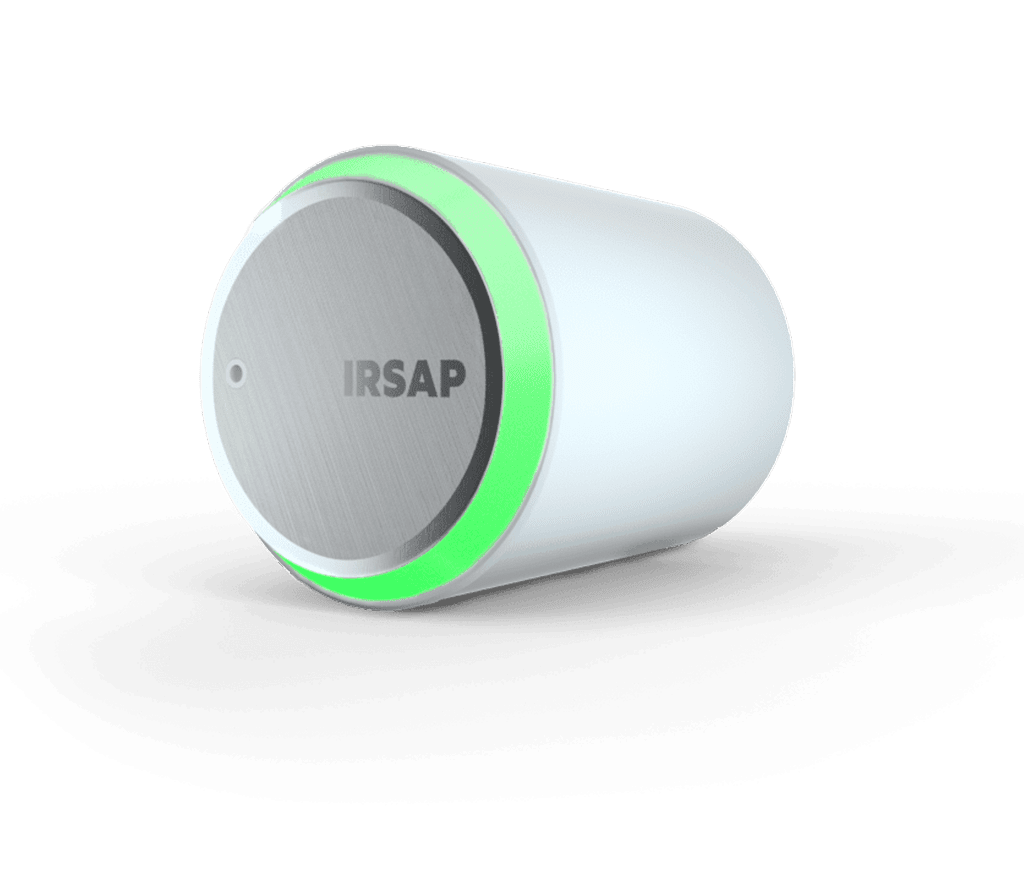
Smart Valve
Controlla la temperatura di ogni singola stanza senza l'esecuzione di opere murarie o elettriche. Le nostre Smart Valve sono compatibili con tutti i marchi di radiatori e i principali produttori di valvole idrauliche.
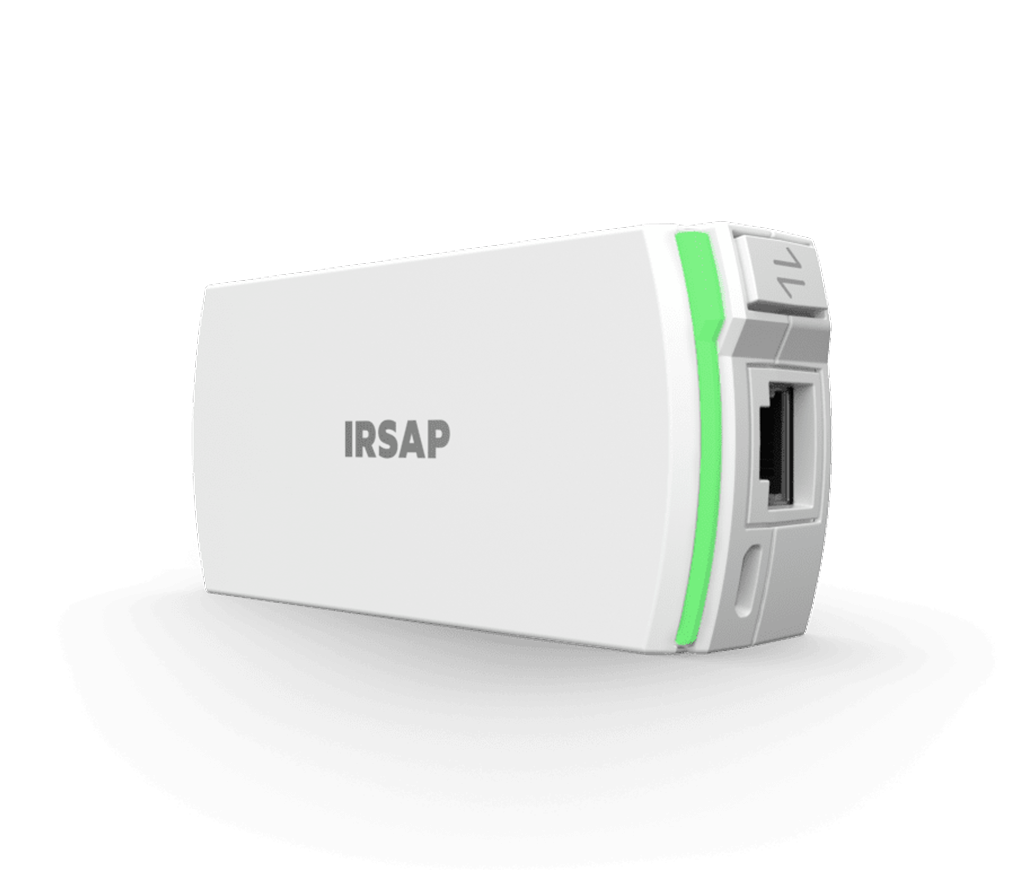
Connection Unit & Repeater
La Connection Unit va collegata al router di casa ed è indispensabile per controllare tutti gli altri dispositivi del sistema dove e quando vuoi direttamente dal tuo smartphone tramite App.
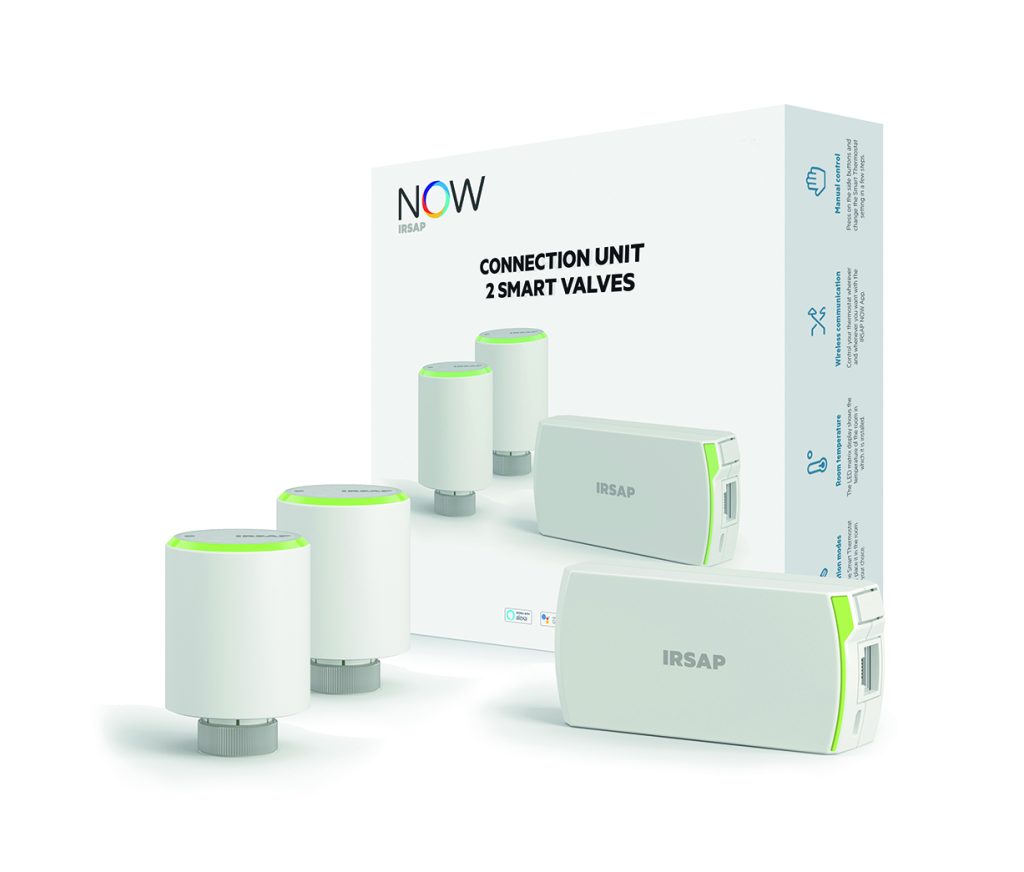
Kit Smart Valve
Ottieni il massimo del comfort e imposta la temperatura ideale di ogni zona della tua casa con il Kit Smart Valve. Controlla la temperatura dove e quando vuoi tramite smartphone. Le nostre valvole termostatiche intelligenti sono compatibili con tutti i marchi di radiatori e i principali produttori di valvole idrauliche.







